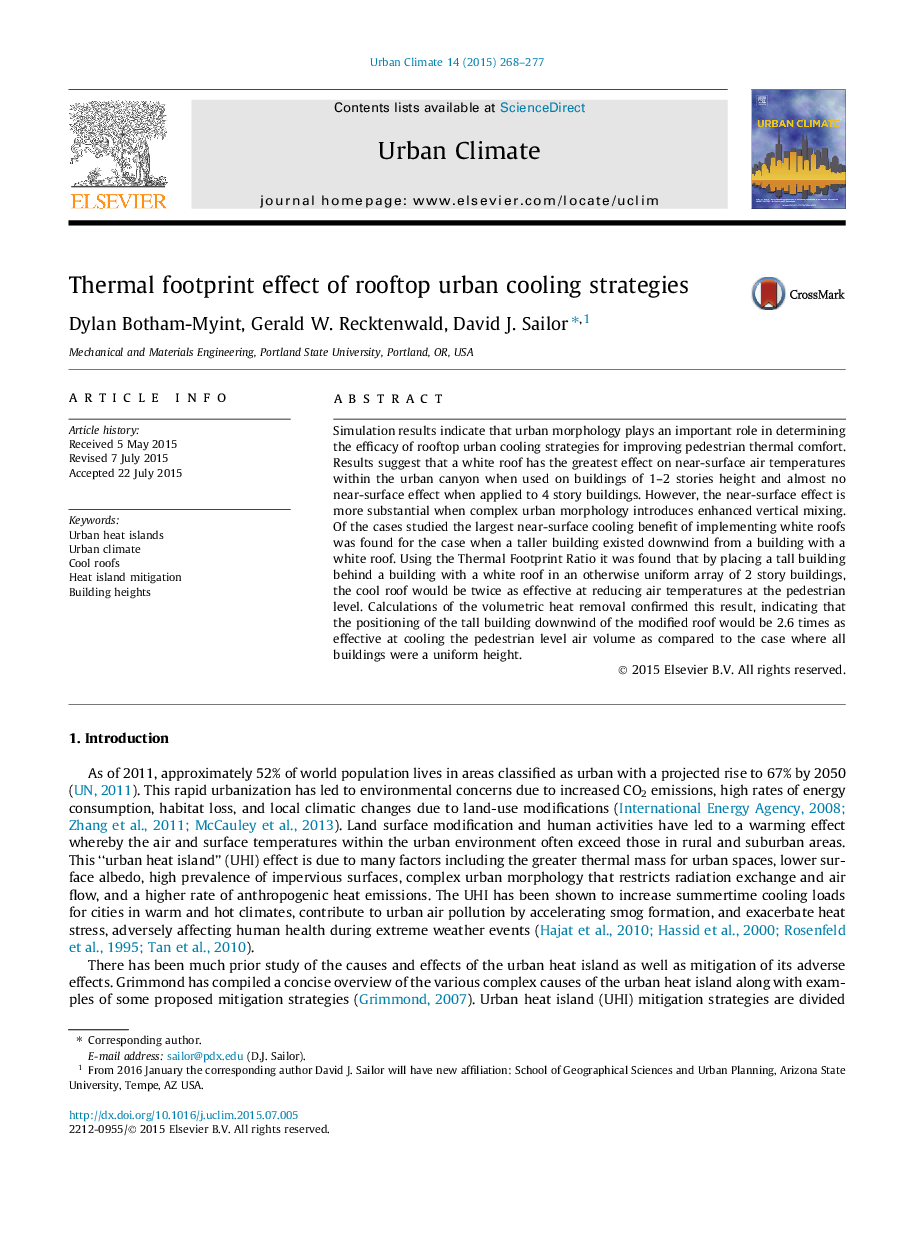| Article ID | Journal | Published Year | Pages | File Type |
|---|---|---|---|---|
| 10260253 | Urban Climate | 2015 | 10 Pages |
Abstract
Simulation results indicate that urban morphology plays an important role in determining the efficacy of rooftop urban cooling strategies for improving pedestrian thermal comfort. Results suggest that a white roof has the greatest effect on near-surface air temperatures within the urban canyon when used on buildings of 1-2 stories height and almost no near-surface effect when applied to 4 story buildings. However, the near-surface effect is more substantial when complex urban morphology introduces enhanced vertical mixing. Of the cases studied the largest near-surface cooling benefit of implementing white roofs was found for the case when a taller building existed downwind from a building with a white roof. Using the Thermal Footprint Ratio it was found that by placing a tall building behind a building with a white roof in an otherwise uniform array of 2 story buildings, the cool roof would be twice as effective at reducing air temperatures at the pedestrian level. Calculations of the volumetric heat removal confirmed this result, indicating that the positioning of the tall building downwind of the modified roof would be 2.6 times as effective at cooling the pedestrian level air volume as compared to the case where all buildings were a uniform height.
Related Topics
Physical Sciences and Engineering
Earth and Planetary Sciences
Earth and Planetary Sciences (General)
Authors
Dylan Botham-Myint, Gerald W. Recktenwald, David J. Sailor,
